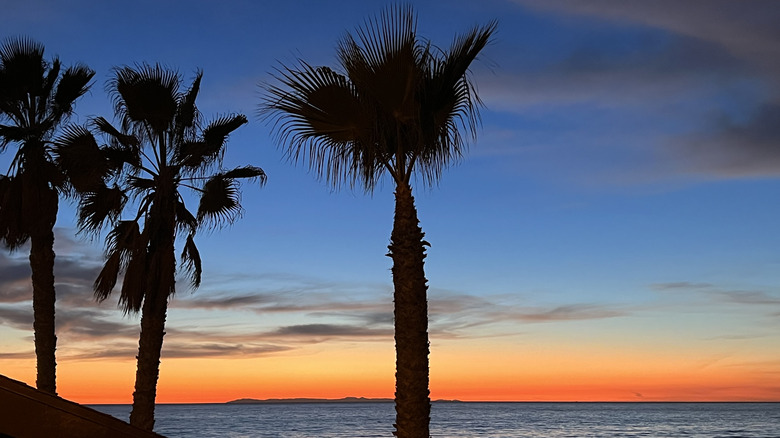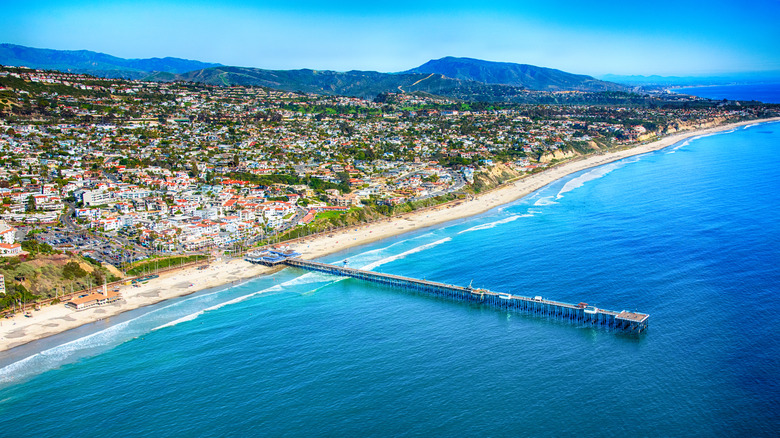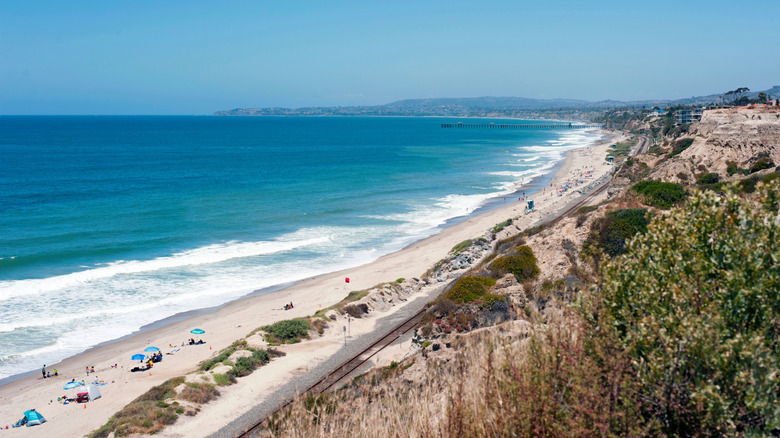The Pacific coastline between Los Angeles and San Diego is beautiful and busy, especially around popular hot spots like La Jolla and Laguna Beach. But a handful of lesser-known California beach towns remain blissfully off the tourist radar, including the low-key surf town of San Clemente.
The southernmost town in Orange County overlooks San Clemente State Beach, a mile-long stretch known for its dramatic bluffs and surf breaks. Its windswept shoreline is a fantastic place for water sports, picnics, and hiking — and if you’ve planned ahead, you can even sleep under the stars at the popular state park-run campsite.
Whether you’re thinking of a weekend stay or a day trip from the city, San Clemente is easily accessible. The most memorable way to arrive is by train: San Clemente is a stop on the Pacific Surfliner, Amtrak’s scenic coastal service between San Luis Obispo and San Diego. If you’re driving, it’s roughly an hour-long trip from either LA or San Diego, depending on traffic, and a 30-minute ride from John Wayne Airport.
Discover San Clemente’s Spanish roots
Nicknamed the “Spanish Village by the Sea,” San Clemente was originally styled after a Mediterranean resort town. It was founded in 1925 by Ole Hanson, previously the mayor of Seattle, whose careful plans called for uniform architecture: Spanish Colonial Revival with whitewashed walls, red-tiled roofs, and decorative tilework reminiscent of homes you’d see in one of Spain’s most beautiful towns.
Of San Clemente’s 500 Spanish-style buildings, only around 200 remain today, all of which are Designated Historic Structures. But Hanson is still considered an American pioneer in city planning, and thanks to strict building codes and preservation efforts, San Clemente retains much of its old-world charm.
You’ll spot many of the original mansions and cottages on a stroll around San Clemente’s downtown. There are 22 Historic Landmarks and five structures listed on the National Register of Historic Places, so keep your eyes peeled. For a spectacular perspective on San Clemente, walk out onto the wooden fishing pier that juts out into the sea: built in 1928, it was part of the founder’s original development plans.




